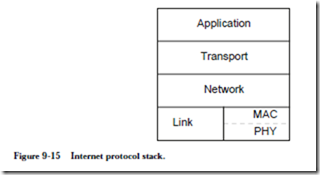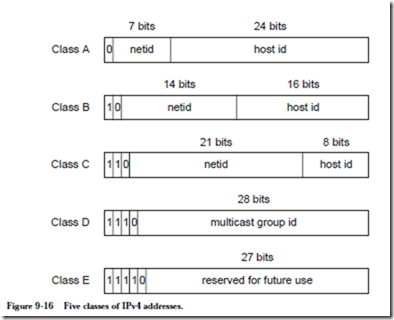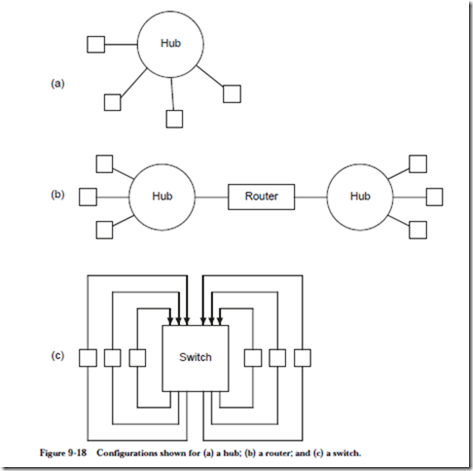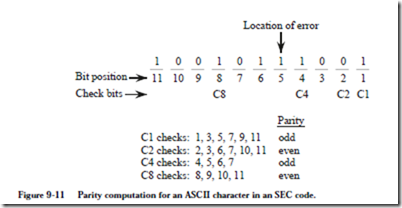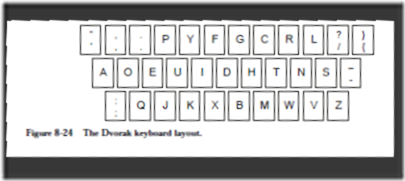8.5 Mass Storage
In Chapter 7, we saw that computer memory is organized as a hierarchy, in which the fastest method of storing information (registers) is expensive and not very dense, and the slowest methods of storing information (tapes, disks, etc.) are inexpensive and are very dense. Registers and random access memories require continuous power to retain their stored data, whereas media such as magnetic tapes and magnetic disks retain information indefinitely after the power is removed, which is known as indefinite persistence. This type of storage is said to be non-volatile. There are many kinds of non-volatile storage, and only a few of the more common methods are described below. We start with one of the most prevalent forms: the magnetic disk.
8.5.1 MAGNETIC DISKS
A magnetic disk is a device for storing information that supports a large storage density and a relatively fast access time. A moving head magnetic disk is com- posed of a stack of one or more platters that are spaced several millimeters apart and are connected to a spindle, as shown in Figure 8-16. Each platter has two

surfaces made of aluminum or glass (which expands less than aluminum as it heats up), which are coated with small particles of a magnetic material such as iron oxide, which is the essence of rust. This is why disk platters, floppy diskettes, audio tapes, and other magnetic media are brown. Binary 1’s and 0’s are stored by magnetizing small areas of the material.
A single head is dedicated to each surface. Six heads are used in the example shown in Figure 8-16, for the six surfaces. The top surface of the top platter and the bottom surface of the bottom platter are sometimes not used on multi-platter disks because they are more susceptible to contamination than the inner surfaces. The heads are attached to a common arm (also known as a comb) which moves in and out to reach different portions of the surfaces.
In a hard disk drive, the platters rotate at a constant speed of typically 3600 to 10,000 revolutions per minute (RPM). The heads read or write data by magne- tizing the magnetic material as it passes under the heads when writing, or by sensing the magnetic fields when reading. Only a single head is used for reading or writing at any time, so data is stored in serial fashion even though the heads
can in principle be used to read or write several bits in parallel. One reason that the parallel mode of operation is not normally used is that heads can become misaligned, which corrupts the way that data is read or written. A single surface is relatively insensitive to the alignment of the corresponding head because the head position is always accurately known with respect to reference markings on the disk.
Data encoding
Only the transitions between magnetized areas are sensed when reading a disk, and so runs of 1’s or 0’s may not be accurately detected unless a method of encoding is used that embeds timing information into the data to identify the breaks between bits. Manchester encoding is one method that addresses this problem, and another method is modified frequency modulation (MFM). For comparison, Figure 8-17a shows an ASCII ‘F’ character encoded in the
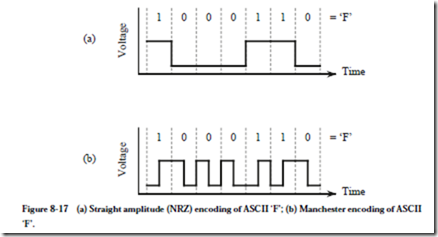
non-return-to-zero (NRZ) format, which is the way information is carried inside of a CPU. Figure 8-17b shows the same character encoded in the Manchester code. In Manchester encoding there is a transition between high and low signals on every bit, resulting in a transition at every bit time. A transition from low to high indicates a 1, whereas a transition from high to low indicates a 0. These transitions are used to recover the timing information.
A single surface contains several hundred concentric tracks, which in turn are composed of sectors of typically 512 bytes in size, stored serially, as shown in
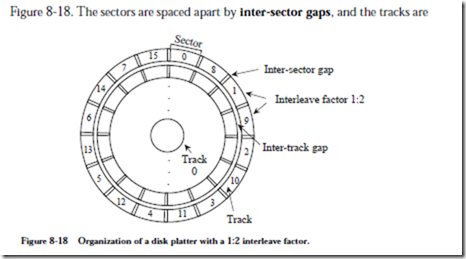
spaced apart by inter-track gaps, which simplify positioning of the head. A set of corresponding tracks on all of the surfaces forms a cylinder. For instance, track 0 on each of surfaces 0, 1, 2, 3, 4, and 5 in Figure 8-16 collectively form cylinder 0. The number of bytes per sector is generally invariant across the entire platter.
In modern disk drives the number of tracks per sector may vary in zones, where a zone is a group of tracks having the same number of sectors per track. Zones near the center of the platter where bits are spaced closely together have fewer sectors, while zones near the outside periphery of the platter, where bits are spaced farther apart, have more sectors per track. This technique for increasing the capacity of a disk drive is known as zone-bit recording.
Disk drive capacities and speeds
If a disk has only a single zone, its storage capacity, C, can be computed from the number of bytes per sector, N, the number of sectors per track, S, the number of tracks per surface, T, and the number of platter surfaces that have data encoded in them, P, with the formula:

A high-capacity disk drive may have N = 512 bytes, S = 1,000 sectors per track, T = 5,000 tracks per surface, and P = 8 platters. The total capacity of this drive is C = 512 bytes/sector ´ 1000 sectors/track ´ 5000 tracks/surface ´ 8 platters ´ 2 surfaces/platter or 38 GB.
Maximum data transfer speed is governed by three factors: the time to move the head to the desired track, referred to as the head seek time, the time for the desired sector to appear under the read/write head, known as the rotational latency, and the time to transfer the sector from the disk platter once the sector is positioned under the head, known as the transfer time. Transfers to and from a disk are always carried out in complete sectors. Partial sectors are never read or written.
Head seek time is the largest contributor to overall access time of a disk. Manufacturers usually specify an average seek time, which is roughly the time required for the head to travel half the distance across the disk. The rationale for this definition is that it is difficult to know, a priori, which track the data is on, or where the head is positioned when the disk access request is made. Thus it is assumed that the head will, on average, be required to travel over half the surface before arriving at the correct track. On modern disk drives average seek time is approximately 10 ms.
Once the head is positioned at the correct track, it is again difficult to know ahead of time how long it will take for the desired sector to appear under the head. Therefore the average rotational latency is taken to be 1/2 the time of one complete revolution, which is on the order of 4-8 ms. The sector transfer time is just the time for one complete revolution divided by the number of sectors per track. If large amounts of data are to be transferred, then after a complete track is transferred, the head must move to the next track. The parameter of interest here is the track-to-track access time, which is approximately 2 ms (notice that the time for the head to travel past multiple tracks is much less than 2 ms per track). An important parameter related to the sector transfer time is the burst rate, the rate at which data streams on or off the disk once the read/write operation has started. The burst rate equals the disk speed in revolutions per second times the capacity per track. This is not necessarily the same as the transfer rate, because there is a setup time needed to position the head and synchronize timing for each sector.
The maximum transfer rate computed from the factors above may not be realized in practice. The limiting factor may be the speed of the bus interconnecting the disk drive and its interface, or it may be the time required by the CPU to transfer the data between the disk and main memory. For example, disks that
operate with the Small Computer Systems Interface (SCSI) standards have a transfer rate between the disk and a host computer of from 5 to 40 MB/second, which may be slower than the transfer rate between the head and the internal buffer on the disk. Disk drives contain internal buffers that help match the speed of the disk with the speed of transfer from the disk unit to the host computer.
Disk drives are delicate mechanisms.
The strength of a magnetic field drops off as the square of the distance from the source of the field, and for this reason, it is important for the head of the disk to travel as close to the surface as possible. The distance between the head and the platter can be as small as 5 µm. The engineering and assembly of a disk do not have to adhere to such a tight tolerance – the head assembly is aerodynamically designed so that the spinning motion of the disk creates a cushion of air that maintains a distance between the heads and the platters. Particles in the air contained within the disk unit that are larger than 5 µm can come between the head assembly and the platter, which results in a head crash.
Smoke particles from cigarette ash are 10 µm or larger, and so smoking should not take place when disks are exposed to the environment. Disks are usually assembled into sealed units in clean rooms, so that virtually no large particles are introduced during assembly. Unfortunately, materials used in manufacturing (such as glue) that are internal to the unit can deteriorate over time and can gen- erate particles large enough to cause a head crash. For this reason, sealed disks (formerly called Winchester disks) contain filters that remove particles generated within the unit and that prevent particulate matter from entering the drive from the external environment.
Floppy disks
A floppy disk, or diskette, contains a flexible plastic platter coated with a mag- netic material like iron oxide. Although only a single side is used on one surface of a floppy disk in many systems, both sides of the disks are coated with the same material in order to prevent warping. Access time is generally slower than a hard disk because a flexible disk cannot spin as quickly as a hard disk. The rotational speed of a typical floppy disk mechanism is only 300 RPM, and may be varied as the head moves from track to track to optimize data transfer rates. Such slow rotational speeds mean that access times of floppy drives are 250-300 ms, roughly 10 times slower than hard drives. Capacities vary, but range up to 1.44 MB.
Floppies are inexpensive because they can be removed from the drive mechanism and because of their small size. The head comes in physical contact with the floppy disk but this does not result in a head crash. It does, however, place wear on the head and on the media. For this reason, floppies only spin when they are being accessed.
When floppies were first introduced, they were encased in flexible, thin plastic enclosures, which gave rise to their name. The flexible platters are currently encased in rigid plastic and are referred to as “diskettes.”
Several high-capacity floppy-like disk drives have made their appearance in recent years. The Iomega Zip drive has a capacity of 100 MB, and access times that are about twice those of hard drives, and the larger Iomega Jaz drive has a capacity of 2GB, with similar access times.
Another floppy drive recently introduced by Imation Corp., the SuperDisk, has floppy-like disks with 120MB capacity, and in addition can read and write ordi- nary 1.44 MB floppy disks.
Disk file systems
A file is a collection of sectors that are linked together to form a single logical entity. A file that is stored on a disk can be organized in a number of ways. The most efficient method is to store a file in consecutive sectors so that the seek time and the rotational latency are minimized. A disk normally stores more than one file, and it is generally difficult to predict the maximum file size. Fixed file sizes are appropriate for some applications, though. For instance, satellite images may all have the same size in any one sampling.
An alternative method for organizing files is to assign sectors to a file on demand, as needed. With this method, files can grow to arbitrary sizes, but there may be many head movements involved in reading or writing a file. After a disk system has been in use for a period of time, the files on it may become fragmented, that is, the sectors that make up the files are scattered over the disk surfaces. Several vendors produce optimizers that will defragment a disk, reorganizing it so that each file is again stored on contiguous sectors and tracks.
A related facet in disk organization is interleaving. If the CPU and interface cir- cuitry between the disk unit and the CPU all keep pace with the internal rate of
the disk, then there may still be a hidden performance problem. After a sector is read and buffered, it is transferred to the CPU. If the CPU then requests the next contiguous sector, then it may be too late to read the sector without waiting for another revolution. If the sectors are interleaved, for example if a file is stored on alternate sectors, say 2, 4, 6, etc., then the time required for the intermediate sec- tors to pass under the head may be enough time to set up the next transfer. In this scenario, two or more revolutions of the disk are required to read an entire track, but this is less than the revolution per sector that would otherwise be needed. If a single sector time is not long enough to set up the next read, than a greater interleave factor can be used, such as 1:3 or 1:4. In Figure 8-18, an inter- leave factor of 1:2 is used.
An operating system has the responsibility for allocating blocks (sectors) to a growing file, and to read the blocks that make up a file, and so it needs to know where to find the blocks. The master control block (MCB) is a reserved section of a disk that keeps track of the makeup of the rest of the disk. The MCB is normally stored in the same place on every disk for a particular type of computer system, such as the innermost track. In this way, an operating system does not have to guess at the size of a disk; it only needs to read the MCB in the inner- most track.
Figure 8-19 shows one version of an MCB. Not all systems keep all of this information in the MCB, but it has to be kept somewhere, and some of it may even be kept in part of the file itself. There are four major components to the MCB. The Preamble section specifies information relating to the physical layout of the disk, such as the number of surfaces, number of sectors per surface, etc. The Files section cross references file names with the list of sectors of which they are com- posed, and file attributes such as the file creation date, last modification date, the identification of the owner, and protections. Only the starting sector is needed for a fixed file size disk, otherwise, a list of all of the sectors that make up a file is maintained.
The Free blocks section lists the positions of blocks that are free to be used for new or growing files. The Bad blocks section lists positions of blocks that are free but produce checksums (see Section 9.4.3) that indicate errors. The bad blocks are thus unused.
As a file grows in size, the operating system reads the MCB to find a free block, and then updates the MCB accordingly. Unfortunately, this generates a great deal of head movement since the MCB and free blocks are rarely (if ever) on the same

track. A solution that is used in practice is to copy the MCB to main memory and make updates there, and then periodically update the MCB on the disk, which is known as syncing the disk.
A problem with having two copies of the MCB, one on the disk and one in main memory, is that if a computer is shut down before the main memory version of the MCB is synced to the disk, then the integrity of the disk is destroyed. The normal shutdown procedure for personal computers and other machines syncs the disks, so it is important to shut down a computer this way rather than by simply shutting off the power. In the event that a disk is not properly synced, there is usually enough circumstantial information for a disk recovery program to restore the integrity of the disk, often with the help of a user. (Note: See problem
8.12 at the end of the chapter for an alternative MCB organization that makes recovery easier.)
8.5.2 MAGNETIC TAPE
A magnetic tape unit typically has a single read / write head, but may have separate heads for reading and writing. A spool of plastic (Mylar) tape with a magnetic coating passes the head, which magnetizes the tape when writing or senses stored data when reading. Magnetic tape is an inexpensive means for storing large amounts of data, but access to any particular portion is slow because all of the prior sections of the tape must pass the head before the target section can be accessed.
Information is stored on a tape in two-dimensional fashion, as shown in Figure 8-20. Bits are stored across the width of the tape in frames and along the length
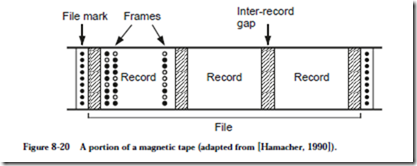
of the tape in records. A file is made up of a collection of (typically contiguous) records. A record is the smallest amount of data that can be read from or written to a tape. The reason for this is physical rather than logical. A tape is normally motionless. When we want to write a record to the tape, then a motor starts the tape moving, which takes a finite amount of time. Once the tape is up to speed, the record is written, and the motion of the tape is then stopped, which again takes a finite amount of time. The starting and stopping times consume sections of the tape, which are known as inter-record gaps.
A tape is suitable for storing large amounts of data, such as backups of disks or scanned images, but is not suitable for random access reading and writing. There are two reasons for this. First, the sequential access can require a great deal of time if the head is not positioned near the target section of tape. The second reason is caused when records are overwritten in the middle of the tape, which is not generally an operation that is allowed in tape systems. Although individual records are the same size, the inter-record gaps eventually creep into the records (this is called jitter) because starting and stopping is not precise.
A physical record may be subdivided into an integral number of logical records. For example, a physical record that is 4096 bytes in length may be com- posed of four logical records that are each 1024 bytes in length. Access to logical records is managed by an operating system, so that the user has the perspective that the logical record size relates directly to a physical record size, when in fact, only physical records are read from or written to the tape. There are thus no inter-record gaps between logical records.
Another organization is to use variable length records. A special mark is placed at the beginning of each record so that there is no confusion as to where records begin.
8.5.3 MAGNETIC DRUMS
Although they are nearly obsolete today, magnetic drum units have traditionally been faster than magnetic disks. The reason for the speed advantage of drums is that there is one stationary head per track, which means that there is no head movement component in the access time. The rotation rate of a drum can be much higher than a disk as a result of a narrow cylindrical shape, and rotational delay is thus reduced.
The configuration of a drum is shown in Figure 8-21. The outer surface of the
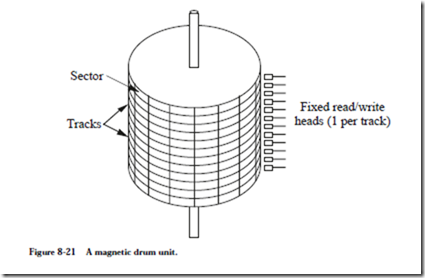
drum is divided into a number of tracks. The top and bottom of the drum are not used for storage, and the interior of the drum is not used for storage, so there is less capacity per unit volume for a drum unit than there is for a disk unit.
The transfer time for a sector on a drum is determined by the rotational delay and the length of a sector. Since there is no head movement, there is no seek time to consider. Nowadays, fixed head disks are configured in a similar manner to drums with one head per track, but are considerably less expensive per stored bit than drums since the surfaces of platters are used rather than the outside of a drum.
8.5.4 OPTICAL DISKS
Several new technologies take advantage of optics to store and retrieve data. Both the Compact Disc (CD) and the newer Digital Versatile Disc (DVD), discussed below, employ light to read data encoded on a reflective surface.
The Compact Disc
The CD was introduced in 1983 as a medium for playback of music. CDs have the capacity to store 74 minutes of audio, in digital stereo (2-channel) format. The audio is sampled at 2 ´ 44,000 16-bit samples per second, or nearly 700 MB capacity. Since the introduction of the CD in 1983, CD technology has improved in terms of price, density, and reliability, which led to the development of CD ROMs (CD read only memories) for computers, which also have the same 700 MB capacity. Their low cost, only a few cents each when produced in volume, coupled with good reliability and high capacity, have made CD ROMs the medium of choice for distributing commercial software, replacing floppy disks.
CD ROMs are “read only” because they are stamped from a master disk similar to the way that audio CDs are created. A CD ROM disk consists of aluminum coated plastic, which reflects light differently for lands or pits, which are smooth or pitted areas, respectively, that are created in the stamping process. The master is created with high accuracy using a high power laser. The pressed (stamped) disks are less accurate, and so a complex error correction scheme is used which is known as a crossinterleaved Reed Solomon error correcting code. Errors are also reduced by assigning 1’s to pit-land and land-pit transitions, with runs of 0’s assigned to smooth areas, rather than assigning 0’s and 1’s to lands and pits, as in Manchester encoding.
Unlike a magnetic disk in which all of the sectors on concentric tracks are lined up like a sliced pie (where the disk rotation uses constant angular velocity), a CD is arranged in a spiral format (using constant linear velocity) as shown in Figure 8-22. The pits are laid down on this spiral with equal spacing from one Figure 8-22 Spiral storage format for a CD.
end of the disk to the other. The speed of rotation, originally the same 30 RPM as the floppy disk, is adjusted so that the disk moves more slowly when the head is at the edge than when it is at the center. Thus CD ROMs suffer from the same long access time as floppy disks because of the high rotational latency. CD ROM drives are available with rotational speeds up to 24´, or 24 times the rotational speed of an audio CD, with a resulting decrease in average access time.
CD ROM technology is appropriate for distributing large amounts of data inex- pensively when there are many copies to be made, because the cost of creating a master and pressing the copies is distributed over the cost of each copy. If only a few copies are made, then the cost of each disk is high because CDs cannot be economically pressed in small quantities. CDs also cannot be written after they are pressed. (They can be economically burned in small quantities with inexpensive CD ROM makers, which is a different process that produces much less durable disks.) A newer technology that addresses this problem is the write once read many (WORM) optical disk, in which a low intensity laser in the CD controller writes onto the optical disk (but only once for each bit location). The writing process is normally slower than the reading process, and the controller and media are more expensive than for CD ROMs.
The Digital Versatile Disc
A newer version of optical disk storage is the Digital Versatile Disc, or DVD. There are industry standards for DVD-Audio, DVD-Video, and DVD-ROM and DVD-RAM data storage. When a single side of the DVD is used, its storage capacity can be up to 4.7 GB. The DVD standards also include the capability of storing data on both sides in two layers on each side, for a total capacity of 17 GB. The DVD technology is an evolutionary step up from the CD, rather than being an entirely new technology, and in fact the DVD player is backwardly compatible–it can be used to play CDs and CD ROMs as well as DVDs.
EXAMPLE: TRANSFER TIME FOR A HARD DISK
Consider calculating the transfer time of a hard magnetic disk. For this example, assume that a disk rotates once every 16 ms. The seek time to move the head between adjacent tracks is 2 ms. There are 32 sectors per track that are stored in linear order (non-interleaved), from sector 0 to sector 31. The head sees the sec- tors in that order.
Assume the read/write head is positioned at the start of sector 1 on track 12. There is a memory buffer that is large enough to hold an entire track. Data is transferred between disk locations by reading the source data into memory, positioning the read/write head over the destination location, and writing the data to the destination.
• How long will it take to transfer sector 1 on track 12 to sector 1 on track 13?
• How long will it take to transfer all of the sectors of track 12 to the corresponding sectors on track 13? Note that sectors do not have to be written in the same order they are read.
Solution:
The time to transfer a sector from one track to the next can be decomposed into its parts: the sector read time, the head movement time, the rotational delay, and the sector write time.
The time to read or write a sector is simply the time it takes for the sector to pass under the head, which is (16 ms/track) ´ (1/32 tracks/sector) = .5 ms/sector. For this example, the head movement time is only 2 ms because the head moves between adjacent tracks. After reading sector 1 on track 12, which takes .5 ms, an additional 15.5 ms of rotational delay is needed for the head to line up with sector 1 again. The head movement time of 2 ms overlaps the 15.5 ms of rota- tional delay, and so only the greater of the two times (15.5 ms) is used.
We sum the individual times and obtain: .5 ms + 15.5 ms + .5 ms = 16.5 ms to transfer sector 1 on track 12 to sector 1 on track 13.
The time to transfer all of track 12 to track 13 is computed in a similar manner. The memory buffer can hold an entire track, and so the time to read or write an entire track is simply the rotational delay for a track, which is 16 ms. The head movement time is 2 ms, which is also the time for four sectors to pass under the head (at .5 ms per sector). Thus, after reading a track and repositioning the head, the head is now on track 13, at four sectors past the initial sector that was read on track 12.
Sectors can be written in a different order than they are read. Track 13 can thus be written starting with sector 5. The time to write track 13 is 16 ms, and the time for the entire transfer then is: 16 ms + 2 ms + 16 ms = 34 ms. Notice that the rotational delay is zero for this example because the head lands at the beginning of the first sector to be written.
![]() The leftmost bits determine the class of the address. Figure 9-16 shows the five IPv4 classes. Class A has 7 bits for the network identification (ID) and 24 bits for the host ID. There can thus be at most 27 class A networks and 224 hosts on each class A network. A number of these addresses are reserved, and so the number of addresses that can be assigned to hosts is fewer than the number of possible addresses.
The leftmost bits determine the class of the address. Figure 9-16 shows the five IPv4 classes. Class A has 7 bits for the network identification (ID) and 24 bits for the host ID. There can thus be at most 27 class A networks and 224 hosts on each class A network. A number of these addresses are reserved, and so the number of addresses that can be assigned to hosts is fewer than the number of possible addresses.